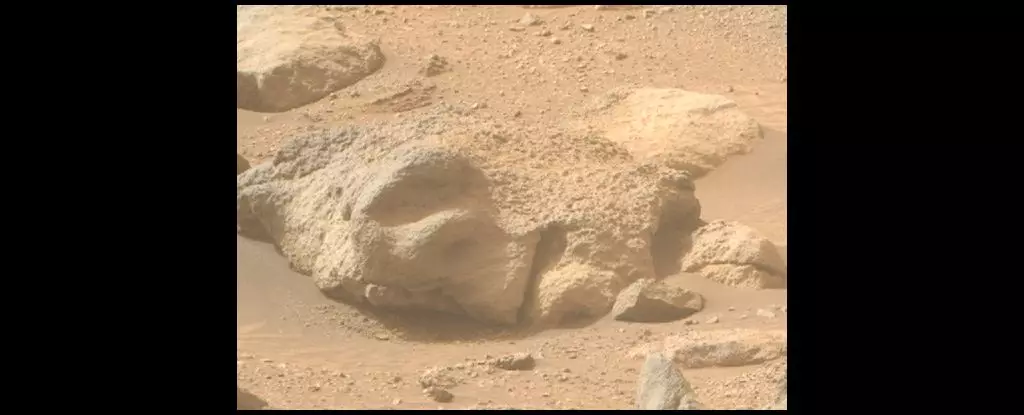In a stunning display of nature’s ability to play tricks on human perception, the Perseverance rover recently transmitted images that depict what appears to be a grotesque, decaying human head resting on the surface of Mars. Captured on September 27, 2024, this image quickly sparked intrigue and speculation, as the oddity’s resemblance to a human visage is striking, even unnerving. However, astute observers and scientists know that this so-called head is nothing more than a peculiar rock formation shaped by the elements of Mars. The resemblance to a human head is simply a manifestation of pareidolia, a psychological phenomenon where the brain recognizes familiar patterns, typically faces, in random stimuli.
The phenomenon of pareidolia is astonishingly prevalent in both terrestrial and extraterrestrial settings. It occurs when our cognitive faculties seek to impose meaningful interpretations on random shapes and structures—an instinctual trait that has likely offered evolutionary advantages throughout human history. This is particularly noticeable in Mars imagery, where countless examples exist of supposed facial formations, anthropomorphic figures, and other recognizable shapes seemingly crafted by Martian erosion. The brain’s fusiform gyrus plays a critical role in this process, rapidly identifying face-like features and bypassing critical analysis.
The fascination with pareidolia goes beyond just the images from Mars. People frequently identify faces in clouds, food, and even mundane objects. The recurrence of these visual cues demonstrates an innate human tendency to find familiarity in the otherwise unfamiliar. Educational projects, like Onformative’s Google Faces initiative, invite participants to inspect Google Earth images for face-like patterns, showcasing this universal tendency to find clarity in chaos.
Mars, with its rugged terrain and varied geological features, provides a perfect backdrop for pareidolia. The planet, once thought to harbor water, possesses sedimentary rocks that have been subjected to erosive forces over eons. Consequently, the wind and shifting sands create bizarre formations that can easily mimic recognizable shapes. The recent Martian “head” is just one of many oddities documented, including interpretations of a bear’s face, a peculiar warrior figure, and even a minuscule, imagined Bigfoot. Each discovery adds to the lore surrounding the Red Planet but is merely a testament to the abrasive beauty of its geology.
While the alluring shapes stir the imagination, it’s important to clarify that they have yet to reveal any evidence supporting the existence of complex life forms on Mars, let alone past human-like representations. The scientific community remains unified in the understanding that these formations are products of geological processes without any historical link to sentient beings.
Despite the mountain of evidence negating the presence of advanced life on Mars, humanity’s desire to explore the Red Planet continues to grow. Planned crewed missions aim to further investigate Mars’s geology and search for any signs of life that may have existed in its long-abandoned rivers and oceans. However, the thrilling tales of Martian pareidolia linger in the public consciousness, enticing imaginations and allowing for the creation of myths surrounding the planet.
While future explorers might uncover remnants of past life, they may also become the bearers of uncanny artifacts, bewitching otherworldly travelers in the distant future. Just as we perceive faces in rocks, future civilizations or beings might uncover remnants of human culture on Mars, interpreting them through their own paradigms and hypothesizing about the lives that created them.
The discovery of the “human head” rock on Mars serves as a compelling reminder of the complexities of human perception. What may seem like a stark reminder of our desires to connect with the cosmos is solely a reflection of our own cognitive mechanisms. The interplay of pareidolia on Mars not only satisfies a deep-rooted curiosity but also offers an opportunity to engage with science and explore the psychological traits that allow us to find meaning in the universe’s randomness. As we gear up for new explorations of Mars, it is essential to keep in mind the balance between imagination and fact, as this harmony fuels the human spirit of discovery and inquiry.


Leave a Reply